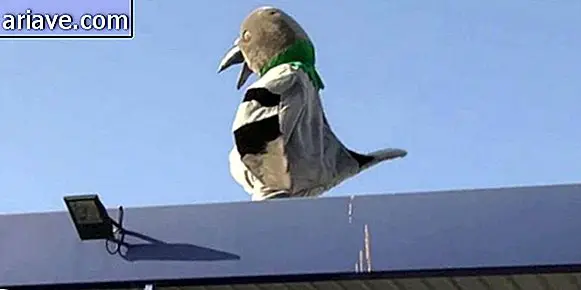Did you know that the largest frog in the world is the size of a domestic cat?
Not everyone is a frog fan or curious about frogs. But that doesn't mean they can't be interesting! One of the smallest in the world, for example, is Microhyla borneensis, which is about the size of a pea, and there is a tiny one here in Brazil (genus Brachycephalus ) that is not much larger, measuring less than 1 centimeter in length. But just as there are tiny frogs, so are the big guys - and the one with the biggest title on the planet is Conraua goliath .

Native to Africa, the Conraua goliath can easily grow from 3 pounds and measure about 40 centimeters in length (not counting paws) - meaning these amphibians are about the size of a domestic cat. And don't think that, because they are huge, these frogs can't surprise you with their heels: although they get tired easily, gigantons can reach distances of about 3 meters with every jump!
Giant
As we mentioned above, C. goliath are native to Africa. More precisely, they can be found in some regions of Equatorial Guinea and Cameroon, which means that their natural habitat is quite restricted. It is hardly helpful that these areas are used for logging - an activity that is increasingly restricting the environment occupied by these (and others!) Animals and leading to the dramatic drop in the number of individuals of this amphibian species.

The mating of these frogs does not involve vocalizations - have you ever thought about the noise getting involved considering the size they have! - since they have no vocal sac, that is, that skin membrane that expands and amplifies the sounds made by these animals. But after ... you know ..., females usually lay their eggs (hundreds of them) in the vegetation in the riverbeds.
After hatching, tadpoles feed on the organic matter in the water, and metamorphosis to adulthood takes approximately 85 to 95 days. In adulthood, C. goliath feed mainly on insects, crustaceans and fish - and become food of humans living near their habitat.

Well, dear reader, besides the C. goliath being losing space in the environment due to human activities, they are considered a delicacy by populations of the region and serve as an important source of food for certain groups. Luckily, these frogs stopped being caught in the wild to serve as pets, yet they were included in the endangered animals list.
In the past, with the goal of increasing C. goliath numbers, conservation groups have even set up captive breeding programs, but unfortunately they have not been successful. What's worse is that, at the moment, there is no existing measure to protect frogs, so the risk that they will disappear is real.
***
The Curious Mega is on several social networks, you know? You can follow us on Facebook, Instagram and also on Twitter! Come with us!











